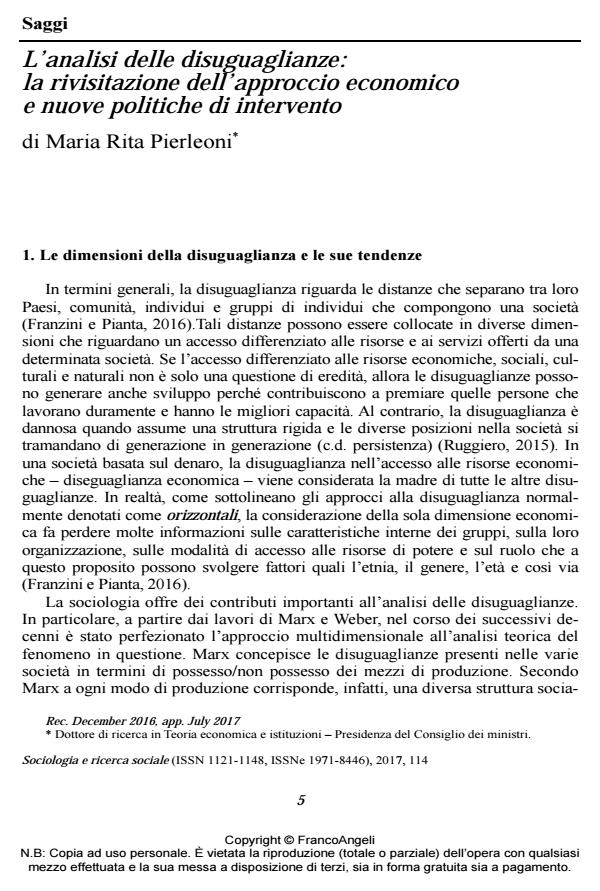L’analisi delle disuguaglianze: la rivisitazione dell’approccio economico e nuove politiche di intervento
Journal title SOCIOLOGIA E RICERCA SOCIALE
Author/s Maria Rita Pierleoni
Publishing Year 2017 Issue 2017/114
Language Italian Pages 24 P. 5-28 File size 263 KB
DOI 10.3280/SR2017-114001
DOI is like a bar code for intellectual property: to have more infomation
click here
Below, you can see the article first page
If you want to buy this article in PDF format, you can do it, following the instructions to buy download credits

FrancoAngeli is member of Publishers International Linking Association, Inc (PILA), a not-for-profit association which run the CrossRef service enabling links to and from online scholarly content.
- The Spatial Dimension of Income Inequality: An Analysis at Municipal Level Luigi Mastronardi, Aurora Cavallo, in Sustainability /2020 pp.1622
DOI: 10.3390/su12041622
Maria Rita Pierleoni, L’analisi delle disuguaglianze: la rivisitazione dell’approccio economico e nuove politiche di intervento in "SOCIOLOGIA E RICERCA SOCIALE " 114/2017, pp 5-28, DOI: 10.3280/SR2017-114001